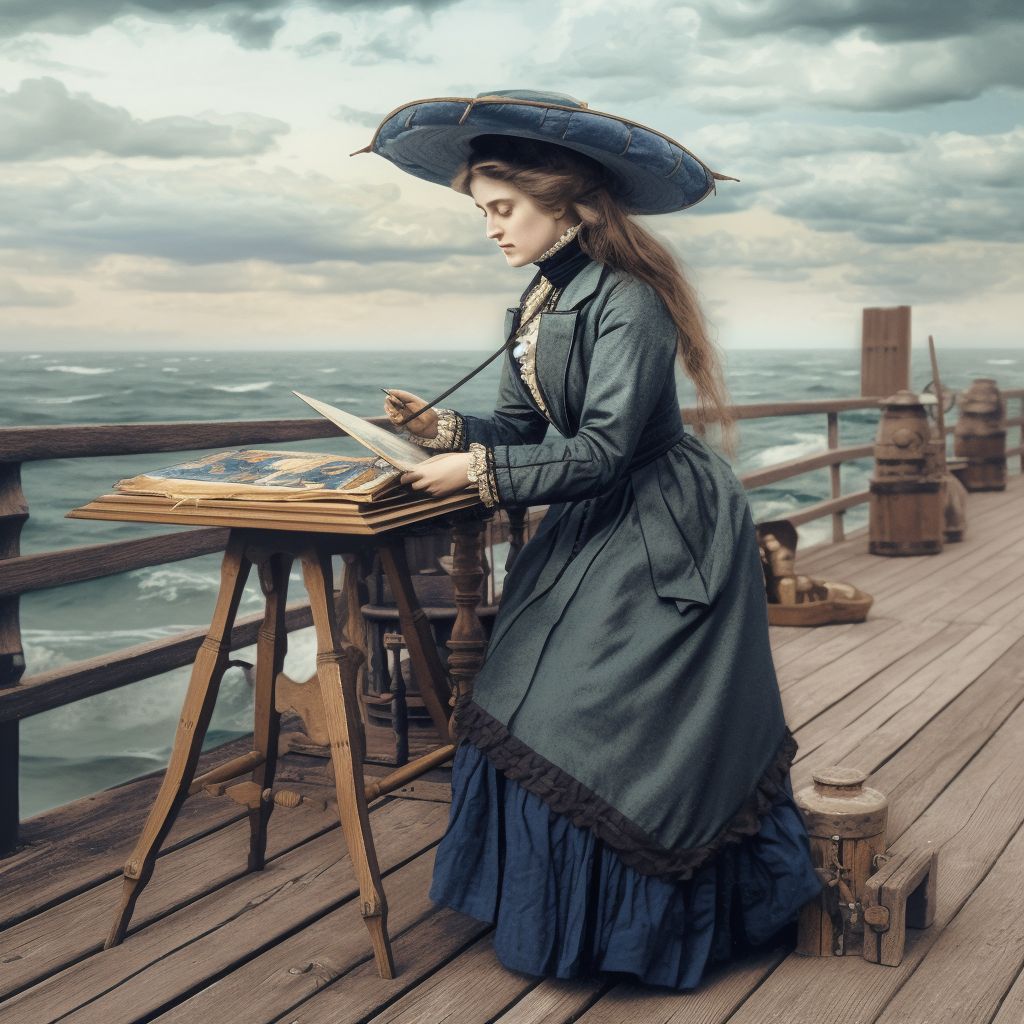Artist
The art world in 1880 was a thriving and evolving landscape, marked by new artistic movements, techniques, and the rise of art schools and institutions. The artist profession during this time was characterized by both traditional and innovative approaches to creating and exhibiting art. This article delves into the various aspects of the artist profession in 1880, including artistic movements, education, exhibition opportunities, and the overall role of artists in society.
Artistic Movements and Styles
In the late 19th century, the art world saw the emergence of various artistic movements and styles that challenged traditional norms and techniques. Some prominent movements during this time included:
Impressionism: Originating in France, Impressionism was characterized by the use of light, color, and visible brushstrokes to capture fleeting moments and impressions of scenes. Artists such as Claude Monet, Pierre-Auguste Renoir, and Edgar Degas were at the forefront of this movement.
Realism: This movement focused on depicting subjects and scenes as they appeared in real life, often highlighting the experiences of everyday people. Artists like Gustave Courbet and Jean-François Millet were known for their realistic portrayals of rural life and laborers.
Symbolism: A reaction against Realism, Symbolism emphasized the use of symbols, allegory, and metaphor to express emotions and ideas. Symbolist artists, such as Gustave Moreau and Odilon Redon, sought to evoke emotional and intellectual responses from their viewers.
Education and Training
In 1880, the artist profession was increasingly supported by the establishment of art schools and institutions. These schools provided formal training in drawing, painting, and sculpture, often under the tutelage of accomplished artists. Students learned classical techniques and studied the works of Old Masters, as well as contemporary styles and movements. Some notable art schools of the time included the École des Beaux-Arts in Paris, the Royal Academy of Arts in London, and the Academy of Fine Arts in Munich.
Exhibitions and Art Markets
Artists in 1880 relied on various platforms to exhibit their work and gain recognition. Annual exhibitions, or "Salons," organized by art academies and institutions, were significant events in the art world. However, these exhibitions often adhered to traditional artistic styles and tastes, making it difficult for innovative artists to gain acceptance.
As a response to these limitations, many artists formed independent exhibition societies and organized their own shows, such as the Impressionists' exhibitions in France. This period also saw the rise of art dealers and galleries, which played a crucial role in promoting and selling artwork. Prominent art dealers like Paul Durand-Ruel and Ambroise Vollard supported emerging artists and helped shape the art market of the time.
The Role of Artists in Society
The artist profession in 1880 was marked by a growing appreciation for the role of artists in society. Artists were seen as visionaries who could express the Human experience, provoke thought, and inspire change. As a result, artists often gained patronage from wealthy individuals, as well as commissions for public and private works.
However, the life of an artist during this time was not without challenges. Many artists struggled to make a living and faced financial instability. Despite these difficulties, the artist profession continued to evolve and adapt, paving the way for future generations of artists to build upon the creative foundation established in the 19th century.
Technological Advances and Their Impact on Art
The 19th century also saw significant technological advancements that impacted the artist profession. The invention of photography in the mid-19th century revolutionized the way people viewed and documented the world around them. Artists began to incorporate photography into their practice, using it as a tool for documentation, study, and artistic expression.
Additionally, the development of new materials and techniques, such as oil paints in tubes and pre-stretched canvases, allowed artists greater flexibility and convenience in their work. These innovations contributed to the overall growth and progress of the art world, as artists were able to experiment with new methods and push the boundaries of their craft.
The International Art Community
In the latter half of the 19th century, the art world became increasingly global, as artists traveled and studied abroad, sharing ideas and influences across borders. This exchange of ideas contributed to the growth of artistic movements and the blending of different cultural and artistic traditions.
The rise of international exhibitions, such as the World's Fairs, provided opportunities for artists to showcase their work on a global stage and gain exposure to new audiences. These events facilitated the growth of the international art community and fostered a sense of camaraderie among artists from different countries and backgrounds.
Women Artists in the 19th Century
The artist profession in 1880 was predominantly male-dominated, with women often facing significant barriers to entry and recognition in the art world. Despite these challenges, many women artists persevered and made significant contributions to the art world during this time.
Institutions such as the Female School of Design in London and the Pennsylvania Academy of Fine Arts in the United States provided women with access to formal art education, while independent art studios and schools also began to accept female students. Notable women artists of the time included Mary Cassatt, Berthe Morisot, and Rosa Bonheur, who overcame societal barriers to establish successful careers as painters and sculptors.
Conclusion
The artist profession in 1880 was marked by a diverse range of artistic movements, styles, and innovations, as well as the growth of art education, exhibitions, and the international art community. The challenges faced by artists, particularly women artists, were significant but did not deter their creativity and contributions to the art world. As we reflect on the rich artistic heritage of the 19th century, it is important to recognize and celebrate the resilience and ingenuity of the artists who shaped the course of art history.
Type
Artisan

